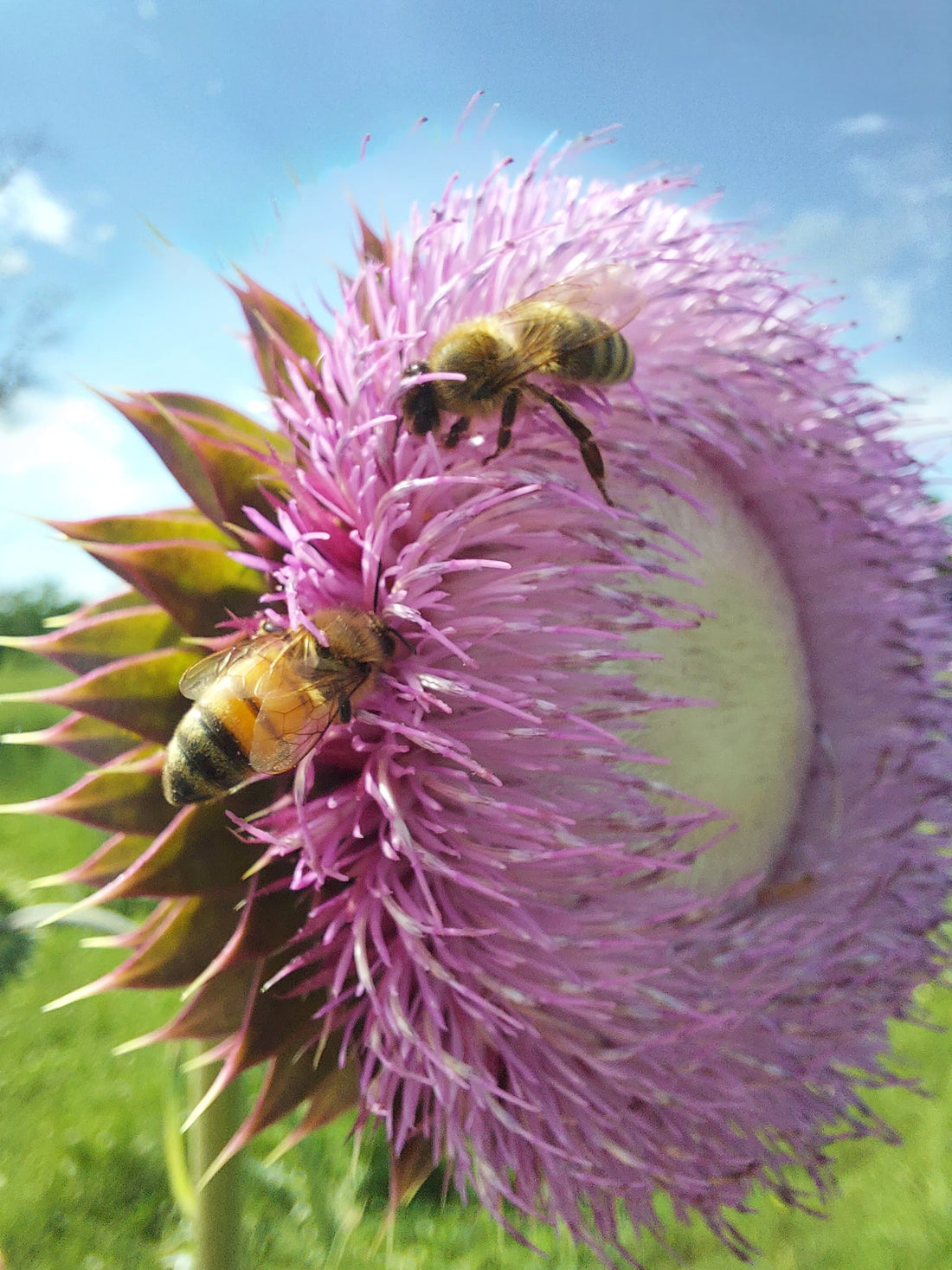Its already time to start taking dandelion honey off the hives! The buckthorn blossoms came and went, and I'm not sure if the bees were able to make honey off such an transient bloom this year, but I may have a box or two out there.. June is a busy beekeeping month, and timing is critical. It feels like I have been out with the hives constantly and it's hard to find time to sit and write, but here is a quick outline of what our bees have been up to:
Most of our hives overwintered in east Texas this year, although we ourselves stayed in Minnesota to tough it out with the rest of our neighbors. We send them down with another beekeeper on a semi-load, not for pollination, but simply for the warmer winter and early spring pollen. The area is perfect for bees, mostly cow pastures and oil fields that are allowed to grow wild, without any pesticide spraying. I arrived in Texas at the end of March to check in with them, which was not too soon. I did loose ten of the small single-deep hives I sent down over the winter, possibly due to an early warm-up followed by cool rainy weather. The stronger hives, however, were already packed with bees and growing swarm cells by the time I checked in. I grafted two batches of queen cells, and made up my 4-frame nucs (nucleus hives for sale) with frames of brood. Then a few weeks later, I still had to split some of the stronger hives which were full of bees and preparing to swarm. I ended up with some undesirable genetics in my bees last year (probably from catching swarms in texas) and a few mean hives, so I grafted from my gentlest hive to re-queen a good number of my production colonies.

(a swarm of bees hanging off a swarm trap in a tree in TX)
My Minnesota beekeeping after the return trip began the second week of May, moving my strongest colonies out to catch the dandelion bloom before it ended, and some smaller ones to pollenate apple orchards. I grafted another batch of queen cells right away, and set up fifty mating nuclei (small colonies to put the queen cells in, where the virgin queens can hatch, finish developing, and fly to mate). Sam (five years old) got to try out his new bee suit, and help me place the queen cells and the queens that hatched early in the nucs. He got his first stings of the season, but is taking it like a champ, and counting them like badges of honor. I may have told him that after five stings they stop hurting as much.
This week I will be pulling the first supers off the hives, and treating the stronger colonies for mites with an organic treatment. Typically in Minnesota, beekeepers don't need to treat for varroa mites until late summer or fall, but these large colonies have been raising a lot of brood since February, and the mites reproduce in the developing bee brood, under the cell cappings that protect the pupa. These colonies look ok now, but I am seeing mites here and there, and signs of the bees uncapping the compromised brood. Without a treatment they could crash in late July.
Treating for mites this week also gives them a week or two to recover their strength before the basswood trees begin to bloom and make honey. Some of the decorative small-leaf basswood trees are blooming closer to Minneapolis already. Out here, the buds are visible on the larger trees, but they don't look ready to open yet. So far six of my larger hives have been growing swarm cells already, and the treatment should slow them down and delay this as well.

